Back To School Again
Every visit to a history museum for me is like a walk back in time, depending on what era or decade the exhibition is about. This last exhibition I visited at the museum of history was a particular one because it was about education, therefore, there were a lot of old books, manuscripts and tools you don't see every day.
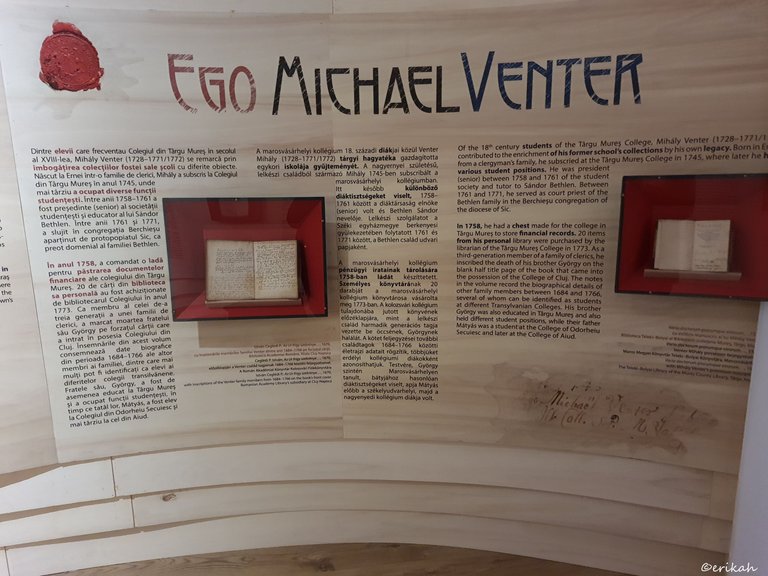
These books are now in the museum because of people who invested their own money and left their collection to schools. In my previous post there was a case mentioned, about a wealthy noble leaving quite a nice amount to the city, for a well determined reasons, which was to establish a school. Without their help, the school system and education would have developed more slowly.
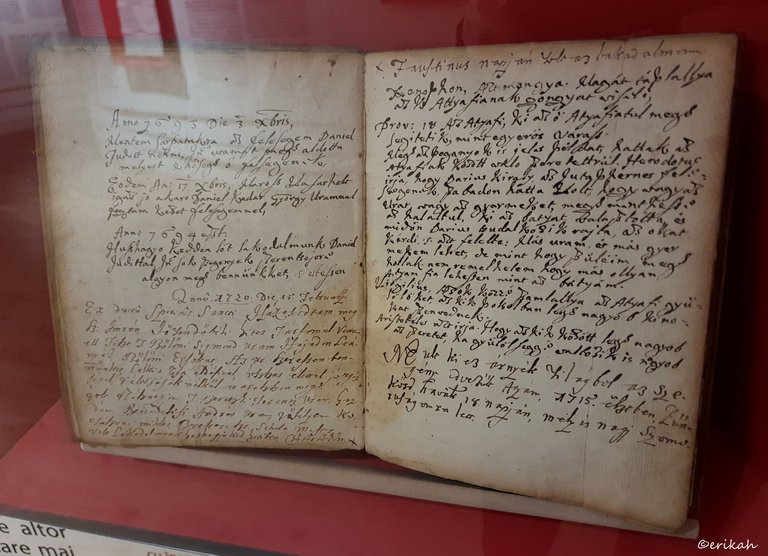
As far as I can understand, this is a handwritten (the only way of writing back in those days) diary of a church (I think), written in Hungarian. The dates in the left are 1693, 1694, then 1720. It's impressive to read such an old writing.
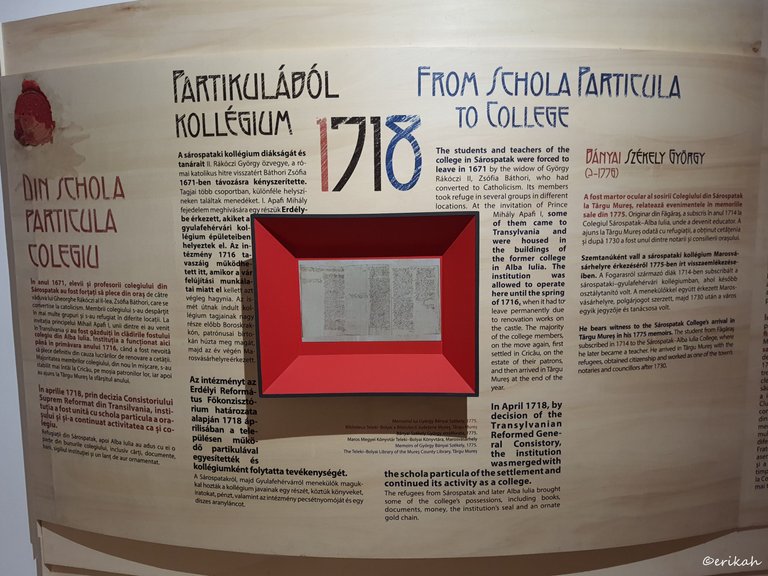
Here's something you may never think about, but it used to be reality in the 17th - 18th century. Most, if not all the schools were religious schools, ran by the church and sponsored by the wealthy nobles. As religion played a huge role in people's life, so did convincing people to change their religion, to convert. This is the reason students as well as teachers had to leave Sárospatak, when Zsófia Báthori converted to Catholicism. Imagine being told you can no longer study there, you need to move to another city, God knows how far from your home. Must have been difficult for both students and teachers.
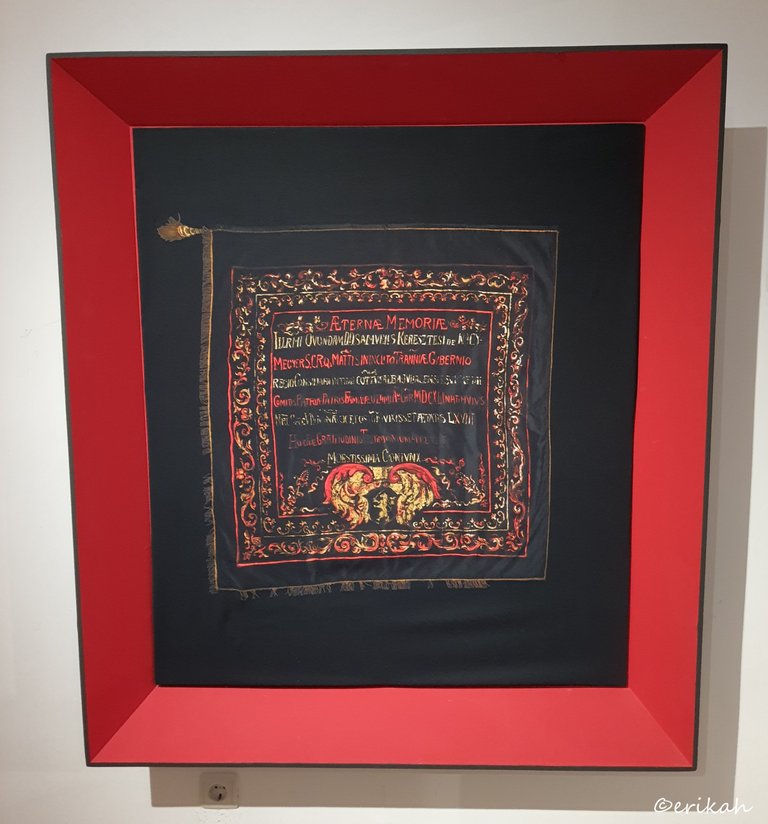
Illustration of the flag of the college of Sárospatak. Must have been nice for the school to have a flag. I don't know if that's a thing these days. Maybe some prestigious schools with a long history have their own flag, but I think the majority doesn't.
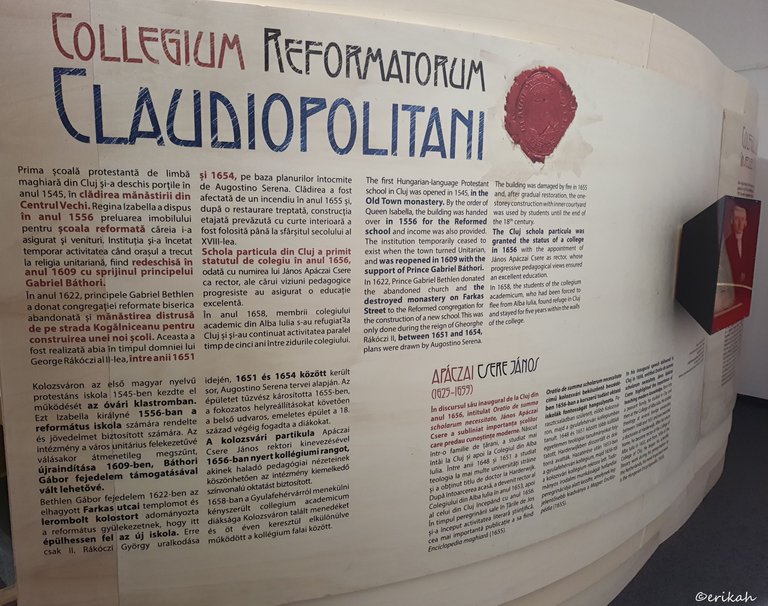
János Apáczai Csere had an important role in the history of education.
János Apáczai Csere, born János Csere, from 1656 mostly János Apáczai Cseri (Apáca, June 10, 1625? – Cluj, December 31, 1659) Transylvanian Hungarian pedagogue, philosopher, Calvinist theologian, the Hungarian education and the forerunner of the dissemination of scientific knowledge in the native language, an outstanding figure of the Puritan movement in Transylvania, the first Hungarian encyclopedist, one of the early Hungarian followers of Cartesian epistemology. source
The funny thing is, I know his name from school, but reading these banners gave me more information about his work and how he influenced education back in his day.
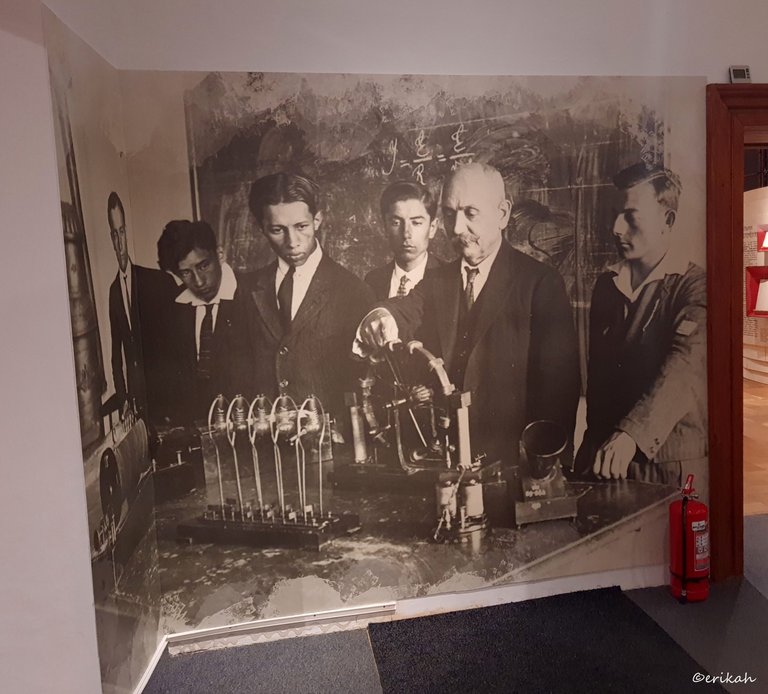
Do you remember your science classes? Did those look something like this photo? Most likely not. First of all, I don't think anyone in your class was wearing a shit, not even the teacher or professor. However, it's interesting to see how experiments were conducted back then. Now think of how those experiments would be conducted today, what tools we would use :)
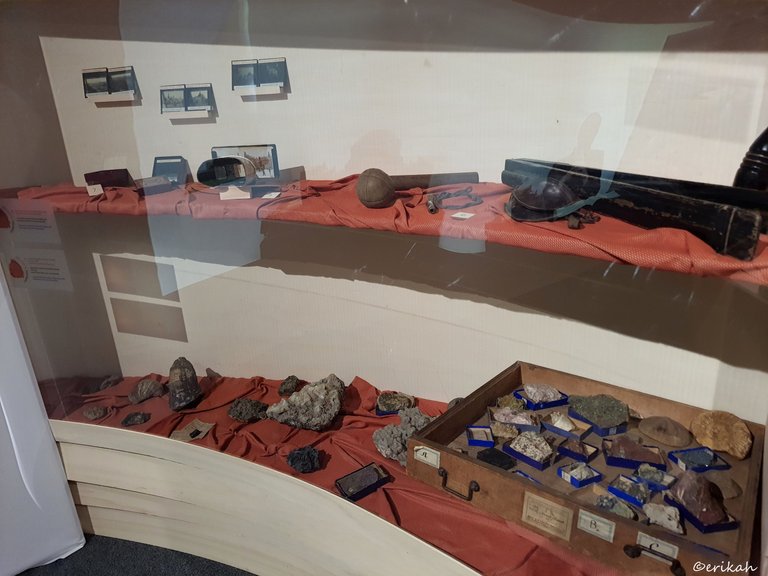
School props are always interesting to look at. These reminds me of my school years and the props we had, obviously you can't compare the two, but it's still interesting.


Look at this. Do you know what it is? It's a stereoscope from a physics lab from 1895.
A stereoscope is a device for viewing a stereoscopic pair of separate images, depicting left-eye and right-eye views of the same scene, as a single three-dimensional image.
A typical stereoscope provides each eye with a lens that makes the image seen through it appear larger and more distant and usually also shifts its apparent horizontal position, so that for a person with normal binocular depth perception the edges of the two images seemingly fuse into one "stereo window". In current practice, the images are prepared so that the scene appears to be beyond this virtual window, through which objects are sometimes allowed to protrude, but this was not always the custom. A divider or other view-limiting feature is usually provided to prevent each eye from being distracted by also seeing the image intended for the other eye. source
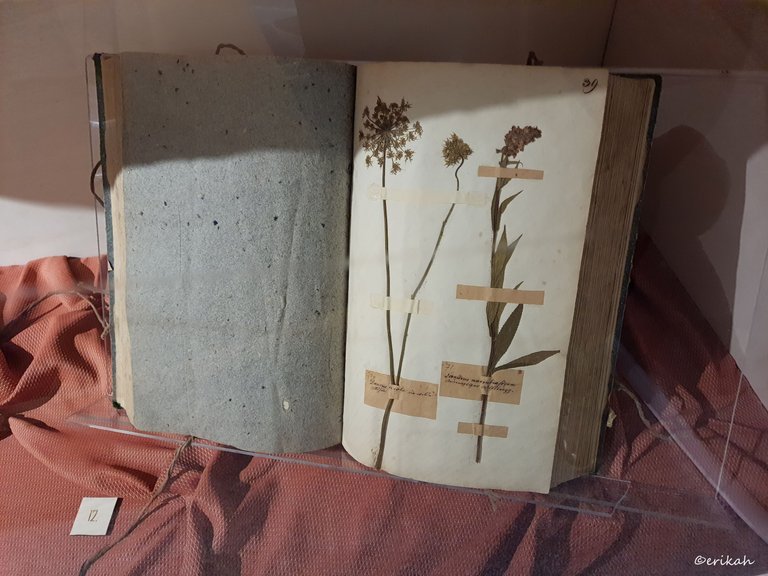
I've mentioned the herbarium a few times lately and here it is. Those who haven't seen one, this is what it looks like. It's a collection of dried plants.
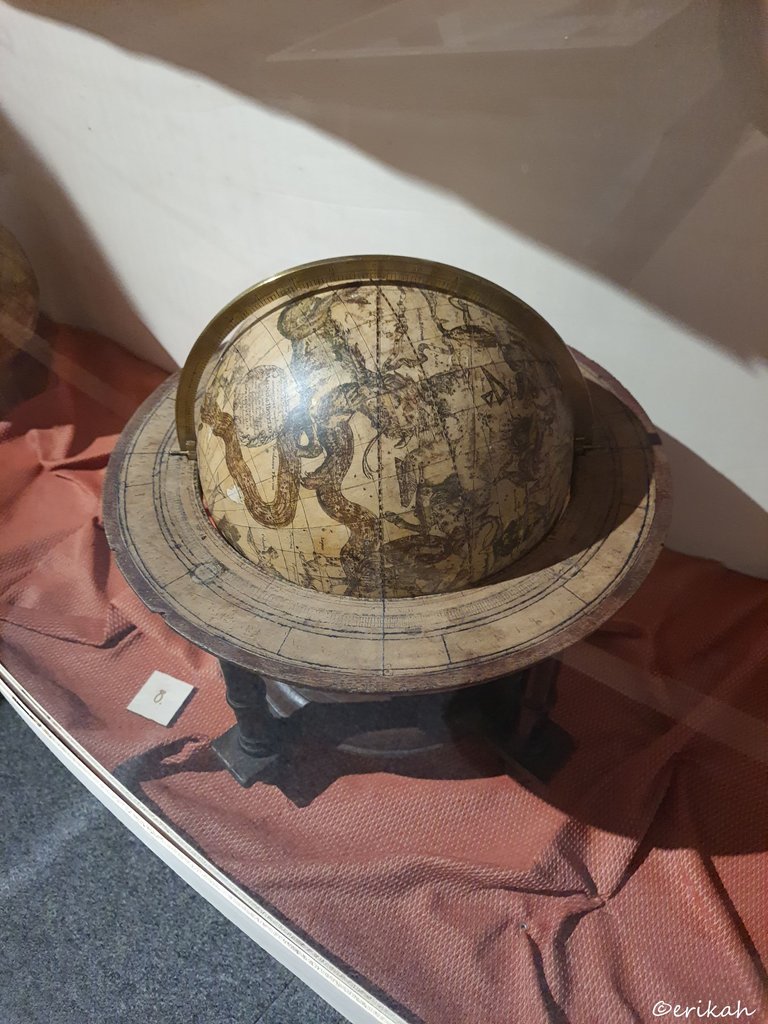
This was where I started to smile. I love old globes, some of them look so elegant, but in the same time, I'm thinking how much the map has changed since those globes were made. Nothing is what it was then, so the information is not reliable, you can only have these as a nice decoration.
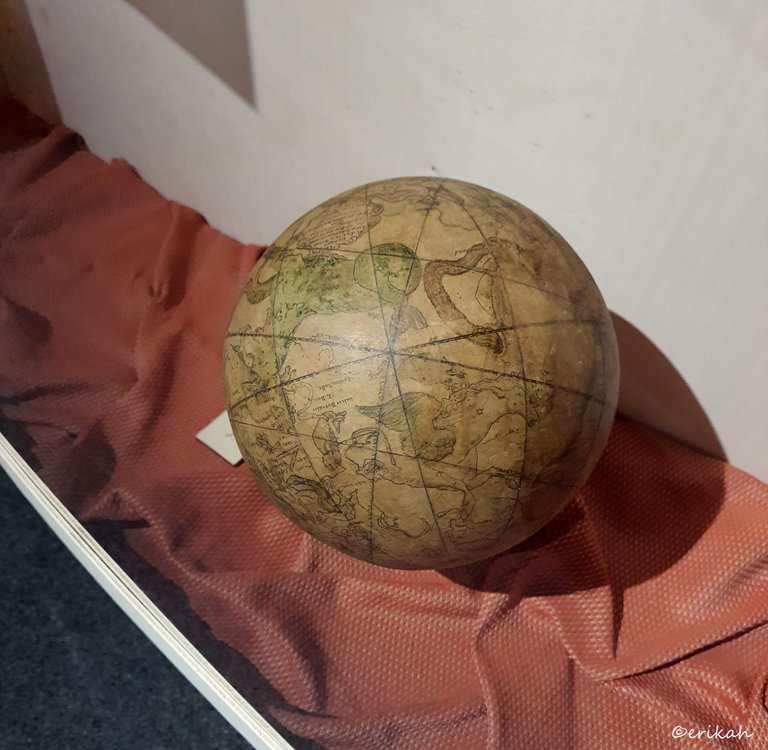
These two are not geographical globes, but celestial globes. To be honest, I've never seen any so far, but it's interesting.
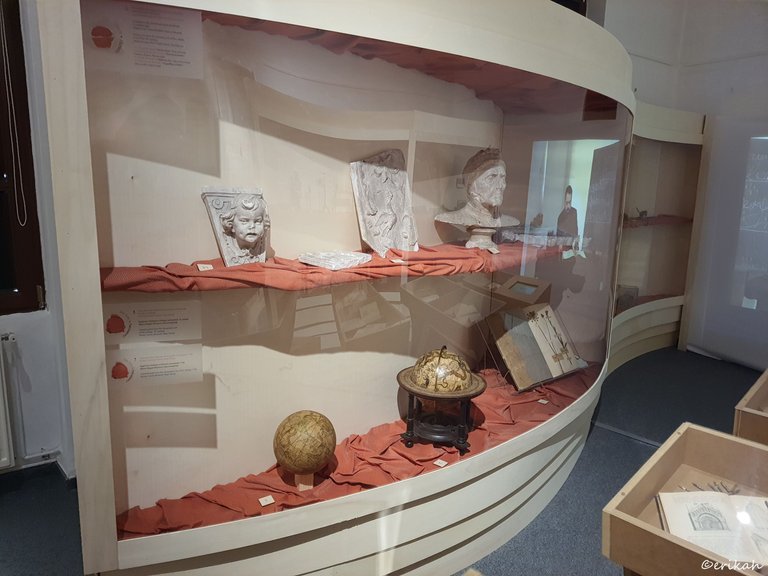
On the top shelf you can see plaster casts from the drawing lab of a collage from the 19th century. Dante's bust, an angel's head and so on. I would have been happy to do this kind of activity at school but apart from drawing and painting with watercolor, we didn't have anything related to this kind of art.
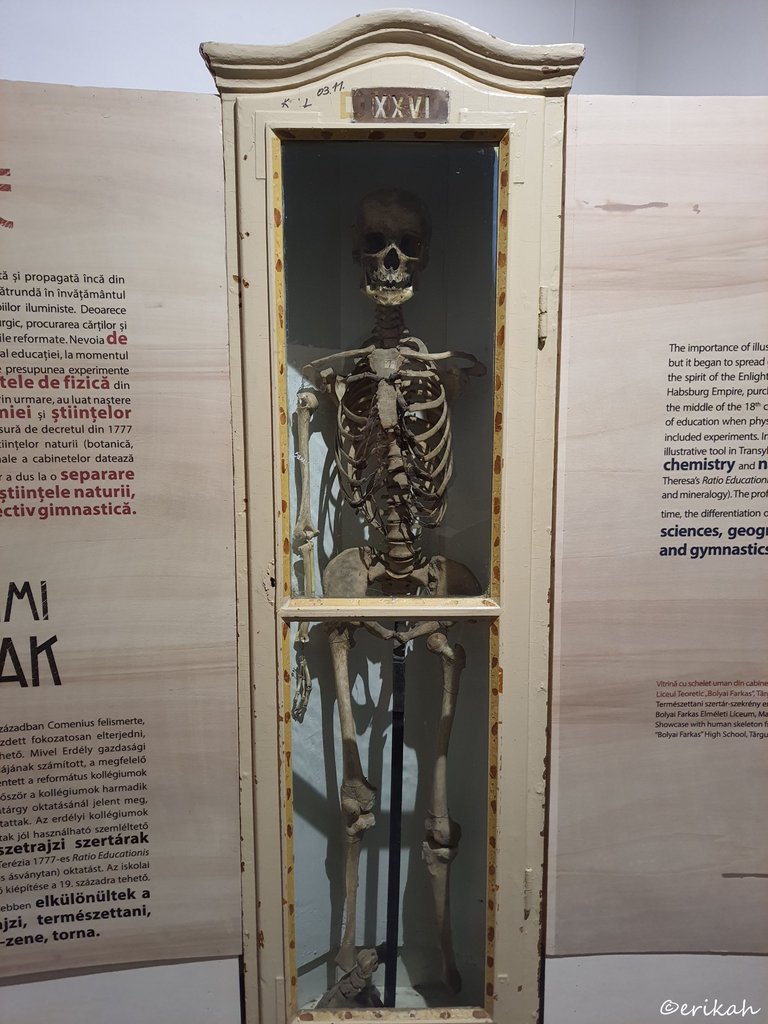
Last, but not least, a skeleton. Have you ever seen one? I have and they always make me smile.
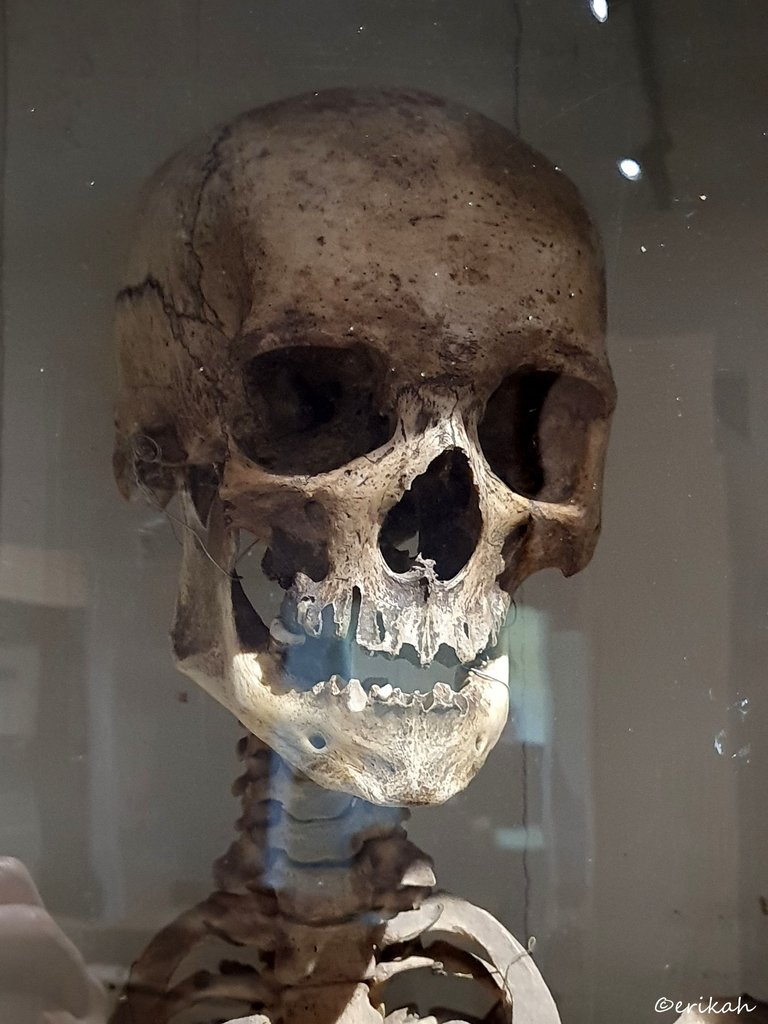
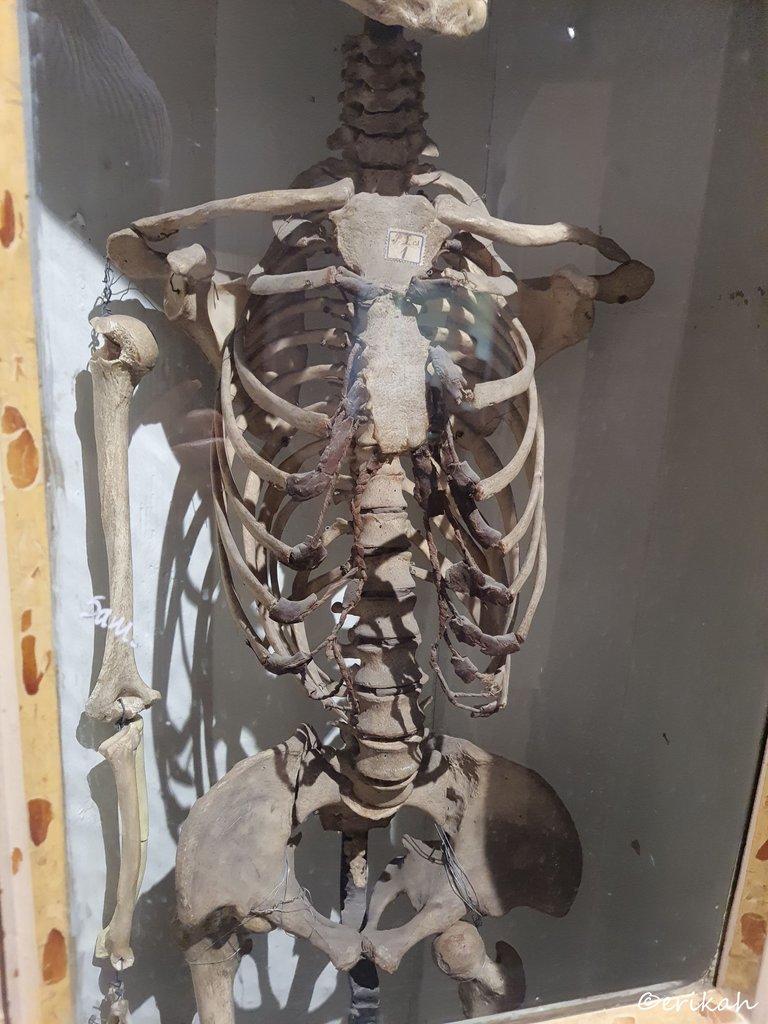
Skeleton from the 19th century :) The truth is, the structure of a skeleton is still what it was once. Maybe the shape ans size of some bones differ, depending on different factors, but the rest is the same.
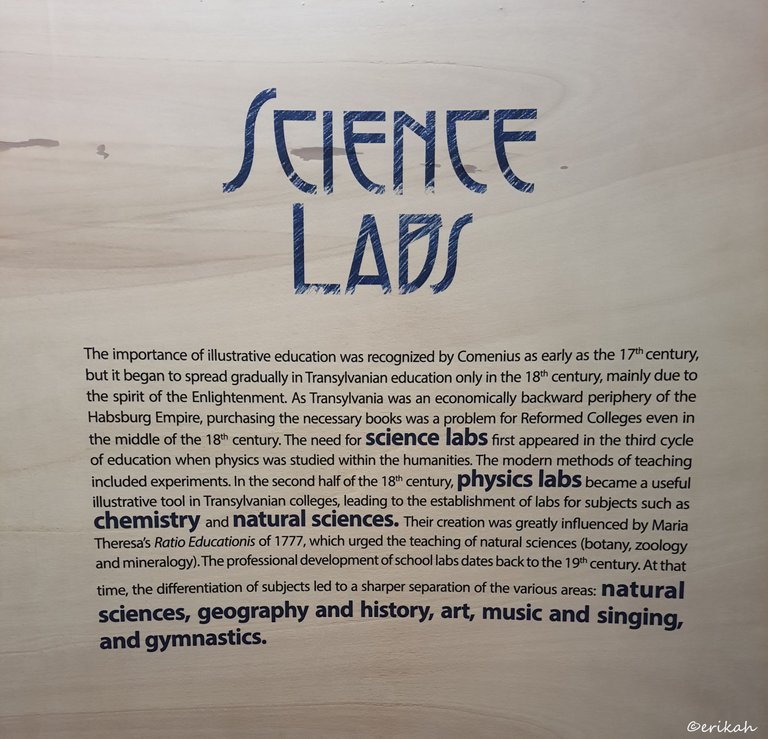
There was something really interesting from scientific point of view, something you don't see very day, and it's important when studying about human prenatal development, but I can't post that photo as it would be disturbing for some. Anyway, it was a fun tour.

If you're a newbie, you may want to check out these guides:
- Communities Explained - Newbie Guide
- Cross Posting And Reposting Explained, Using PeakD
- Hive Is Not For Me
- How To Pump Your Reputation Fast - Newbie Guide
- Tips And Tricks & Useful Hive Tools For Newbies
- More Useful Tools On Hive - Newbie Guide
- Community List And Why It Is Important To Post In The Right Community
- Witnesses And Proposals Explained - Newbie Guide
- To Stake, Or Not To Stake - Newbie Guide
- Tags And Tagging - Newbie Guide
- Newbie Expectations And Reality
- About Dust Vote And Hive Reward Pool, by libertycrypto27

Interesting post 👍
I did have a chemistry professor with a nice mustache like that 😁 I always like to look at old globes and maps. Sounds like these were celestrial. I bet both celestrial and earth globes were getting pretty accurate by the 18th century. But I just like the early ones as beautiful works of art.
Lol, you have a good memory then, if upu can remember your chemistry professor's mustache 😁
If you like old globes, maybe you've seen those big ones in the movies. You lift the top half and you can store drinks inside. Not that I'm a drinker but it's interesting.
Nice post!
Spam comment
Very interesting and very meaningful post Thank you for sharing
Thank you.
What a beautiful photography .. it's .. look like my friend skeleton.. 🦴🦴
I'm not sure I understand, but thank you.
I said this skull looks like my friend's skull. What else did I do?
You said "look like my friend skeleton.. 🦴🦴" which seemed strange as there's no way to see your friend's skeleton, unless they are not alive anymore and their bones exposed.
!LOL
!ALIVE
@erikah! You Are Alive so I just staked 0.1 $ALIVE to your account on behalf of @ cryptoyzzy. (8/10)
The tip has been paid for by the We Are Alive Tribe through the earnings on @alive.chat, feel free to swing by our daily chat any time you want, plus you can win Hive Power (2x 50 HP) and Alive Power (2x 500 AP) delegations (4 weeks), and Ecency Points (4x 50 EP), in our chat every day.

lolztoken.com
You are out of jokes for the day!
@cryptoyzzy you can call @lolzbot a maximum of 8 times per day.
Level up by buying more $LOLZ so you can share more jokes per day!
!LOL
lolztoken.com
You are out of jokes for the day!
@gameexp you can call @lolzbot a maximum of 10 times per day.
Level up by buying more $LOLZ so you can share more jokes per day!
You always came with informative post, it is always great to learn more about different places of world...
I'm trying to.
👍🏻
How lucky you are to see historical objects in the past, I've never seen them here, and I was surprised to see a book that dates back to 1693, it's absolutely fantastic
Uno da por hecho tantas comodidades con las que cuenta hoy dia y no sabemos apreciar por lo que tuvieron que pasar nuestro padres o abuelos, tenemos tantas oportunidades a la hora de estudiar y no las aprovechamos por ser cómodos.